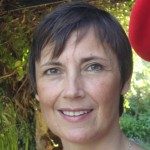Lien vers Pubmed [PMID] – 16115863
J. Biol. Chem. 2005 Oct;280(43):35859-67
NOD2/CARD15 is the first characterized susceptibility gene in Crohn disease. The Nod2 1007fs (Nod2fs) frameshift mutation is the most prevalent in Crohn disease patients. Muramyl dipeptide from bacterial peptidoglycan is the minimal motif detected by Nod2 but not by Nod2fs. Here we investigated the response of human peripheral blood mononuclear cells (PBMCs) from Crohn disease patients not only to muramyl dipeptide but also to several other muramyl peptides. Most unexpectedly, we observed that patients homozygous for the Nod2fs mutation were totally unresponsive to MurNAc-L-Ala-D-Glu-meso-diaminopimelic acid (DAP) (M-Tri(DAP)), the specific agonist of Nod1, and to Gram-negative bacterial peptidoglycan. In contrast, PBMCs from a patient homozygous for the Nod2 R702W mutation, also associated with Crohn disease, displayed normal response to Gram-negative bacterial peptidoglycan. In addition, the blockage of the Nod1/M-Tri(DAP) pathway could be partially overcome by co-stimulation with the Toll-like receptors agonists lipoteichoic acid or lipopolysaccharide. Investigation into the mechanism of this finding revealed that Nod2fs did not act as a dominant-negative molecule for the Nod1/M-Tri(DAP) pathway, implying that the blockage is dependent upon the expression or activity of other factors. We demonstrated that PBMCs from Nod2fs patients express high levels of the peptidoglycan recognition protein S, a secreted protein known to interact with muramyl peptides. We proposed that through a scavenger function, peptidoglycan recognition protein S may dampen M-Tri(DAP)-dependent responses in Nod2fs patients. Together, our results identified a cross-talk between the Nod1 and Nod2 pathways and suggested that down-regulation of Nod1/M-Tri(DAP) pathway may be associated with Crohn disease.



